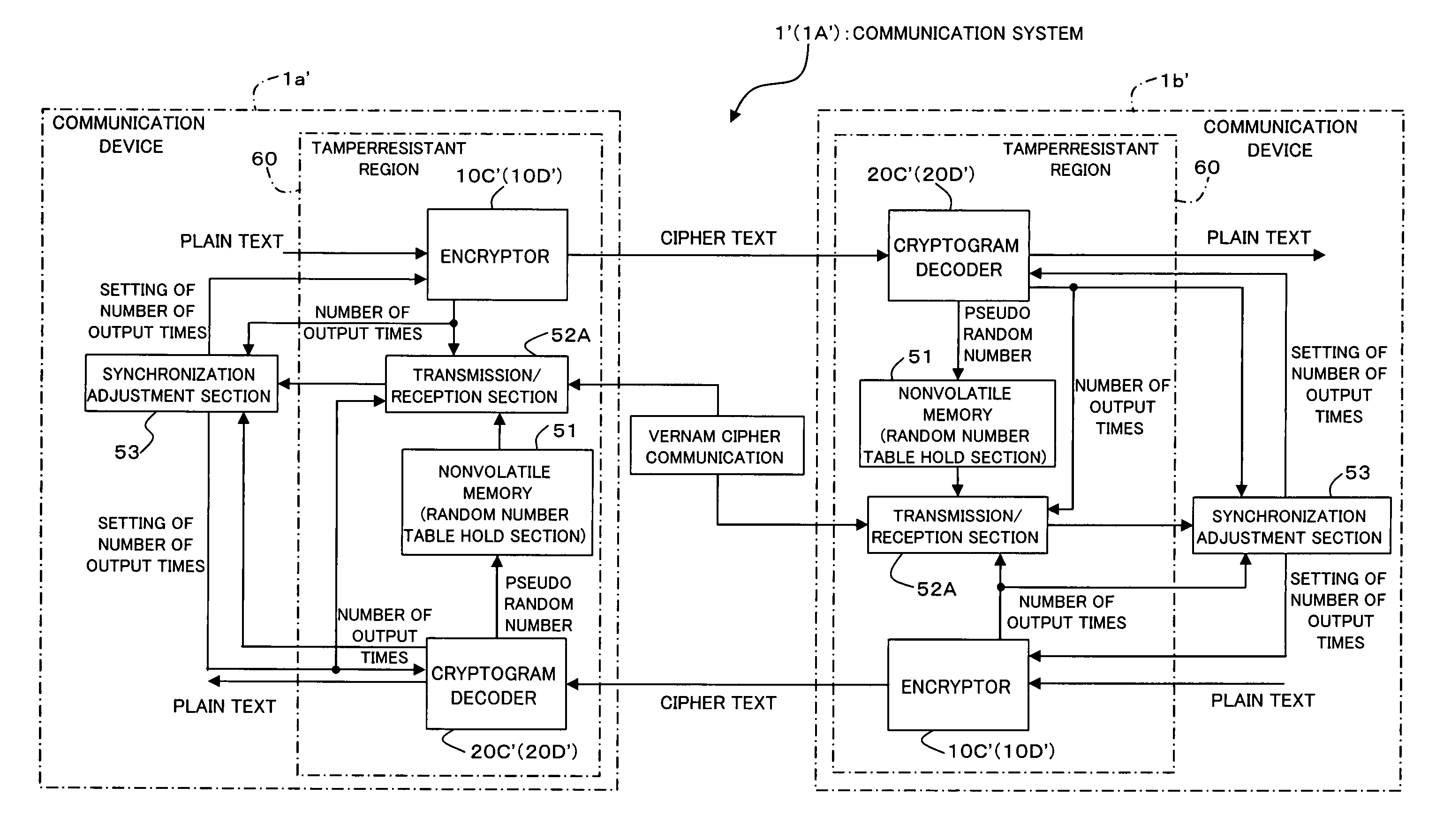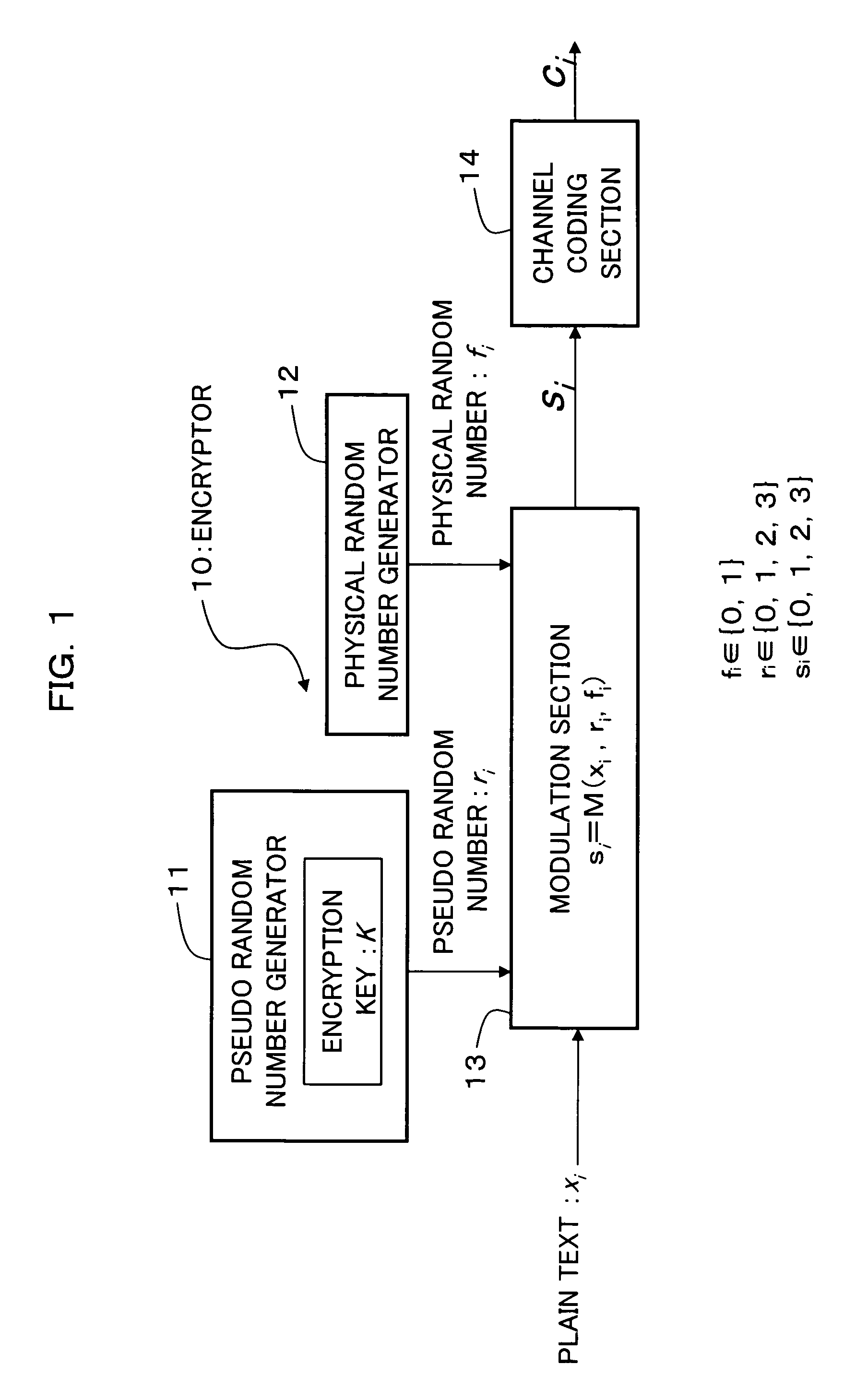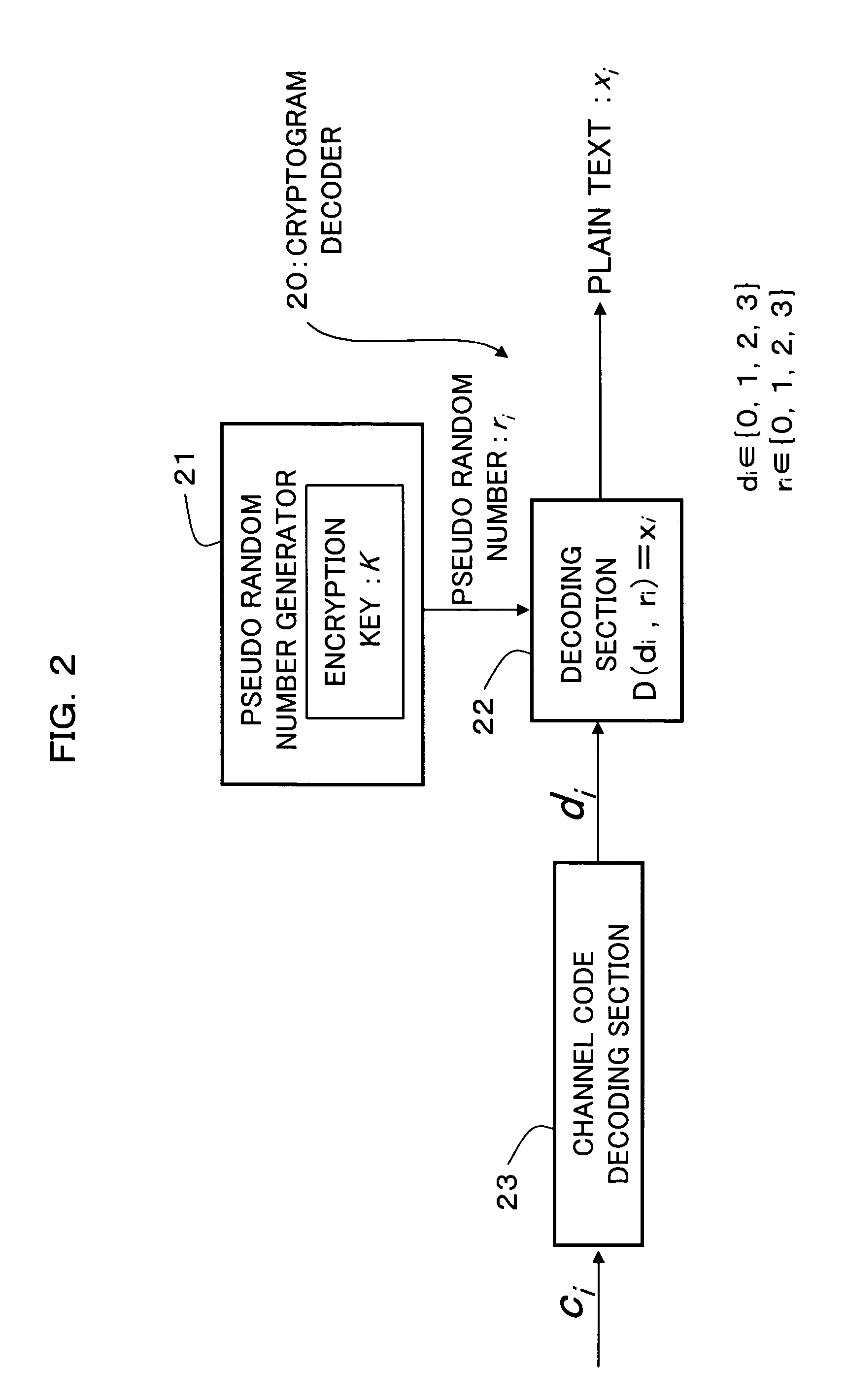Encryption method, cryptogram decoding method, encryptor, cryptogram decoder, and communication system
a cryptogram decoding and encryption technology, applied in the field of encryption methods, can solve the problems of not being able to discriminate coherent light, not being able to know which one of the set of coherent light beams is coherent, and the quantum cipher technique is considered impossible to decode (unconditionally safe) against any attack method, etc., to achieve the effect of greater encryption strength
- Summary
- Abstract
- Description
- Claims
- Application Information
AI Technical Summary
Benefits of technology
Problems solved by technology
Method used
Image
Examples
first embodiment
[1] Configuration of the Encryptor in the First Embodiment
[0162]FIG. 1 is a block diagram showing a configuration of an encryptor as a first embodiment of the present invention and as shown in FIG. 1, an encryptor 10 in the first embodiment is configured so as to provide a pseudo random number generator 11, a physical random number generator 12, a modulation section 13, and a channel coding section 14.
[0163]The pseudo random number generator (first pseudo random number generation section, modulation pseudo random number generation section) 11 generates and outputs a modulation pseudo random number (first pseudo random number) ri based on an encryption key K set in advance. For example, if the encryption key K is a 100-bit binary number, a (2100−1)-bit binary number, that is, a pseudo random number with a period of (2100−1) bits is generated from the physical random number generator 11. The output from the physical random number generator 11 is dealt with as a pseudo random number ri...
second embodiment
[8] Encryption / Cryptogram Decoding Technique in the Second Embodiment
[0491]In the encryption / cryptogram decoding technique in the first embodiment described above, the modulation section 13 performs modulation using, for example, the modulation three-variable function si=M (xi, ri, fi) as shown in FIG. 7(A) for all of the bits of the plain text xi to be transmitted and modulates each bit of the plain text xi to be transmitted into the two-bit output si. Therefore, the number of bits of the modulation output si is double the number of bits of the plain text xi to be transmitted.
[0492]The encryption / cryptogram decoding technique as the second embodiment of the present invention to be explained below with reference to FIG. 11 to FIG. 16 is a combination of the encryption / cryptogram decoding technique described above as the first embodiment with reference to FIG. 1 to FIG. 10 and the stream cipher scheme described above as the prior art with reference to FIG. 18, and in the second embod...
fifth embodiment
[11] Encryption / Cryptogram Decoding Technique in the Fifth Embodiment
[0647]FIG. 27 is a block diagram showing the entire configuration of the communication systems 1′ and 1A′ to which the encryption / cryptogram decoding technique as the fifth and sixth embodiments of the present invention has been applied and the communication system 1 in the third embodiment shown in FIG. 27 is configured so as to provide two communication devices 1a′ and 1b′ connected so that communication is possible to each other via a communication network etc. For the communication system 1′ in the fifth embodiment and the communication system 1A′ in the sixth embodiment to be described later, a case will be explained where the two communication devices 1a′ and 1b′ are connected so that communication is possible to each other via a communication channel (signal line) in which tampering may occur and the two communication devices 1a′ and 1b′ perform synchronization processing by Vernam cipher communication being...
PUM
 Login to View More
Login to View More Abstract
Description
Claims
Application Information
 Login to View More
Login to View More - R&D
- Intellectual Property
- Life Sciences
- Materials
- Tech Scout
- Unparalleled Data Quality
- Higher Quality Content
- 60% Fewer Hallucinations
Browse by: Latest US Patents, China's latest patents, Technical Efficacy Thesaurus, Application Domain, Technology Topic, Popular Technical Reports.
© 2025 PatSnap. All rights reserved.Legal|Privacy policy|Modern Slavery Act Transparency Statement|Sitemap|About US| Contact US: help@patsnap.com



